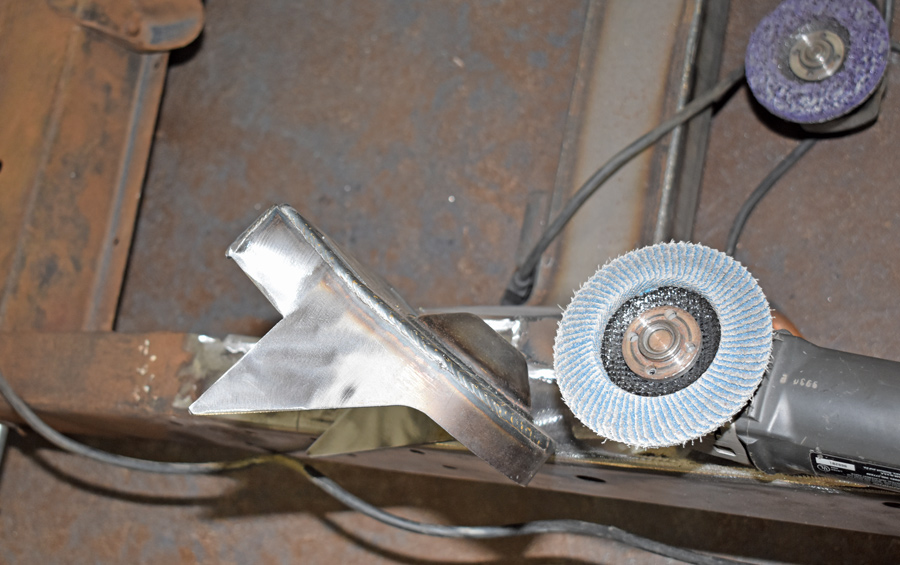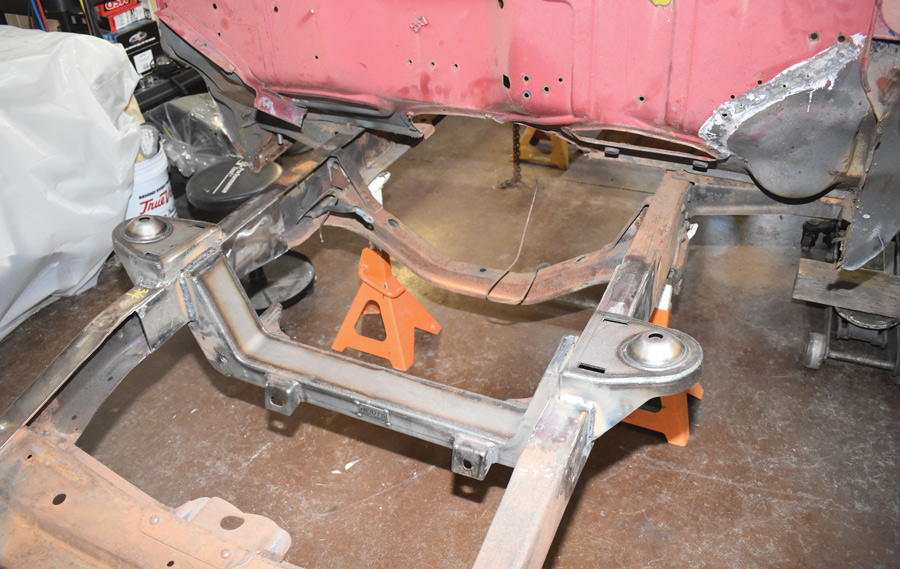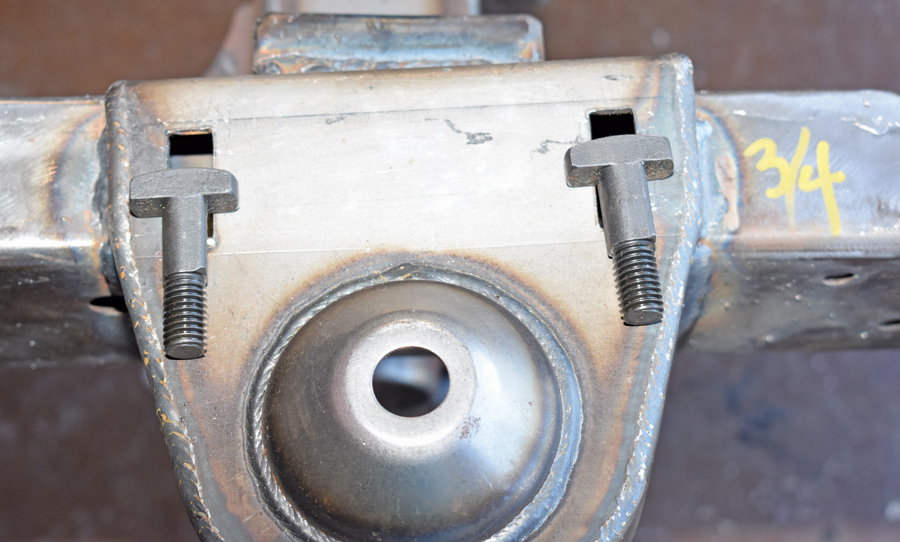
 Tech
TechFord F-100s
BY Ron Ceridono  Photography By The Author
Photography By The Author
f all the products that have been offered to improve the overall performance of hot rods and classic trucks, arguably, Mustang II–based independent front suspension kits have to be high up on the list. Simple, affordable, and effective, these suspension packages make it easy to transform a rough-riding, solid-axle truck into a smooth-riding, better-handling version of itself. In addition to the advantages IFS offers compared to a solid front axle, there are a few other perks, such as the modern disc brakes and rack-and-pinion steering, that are also part of the package. The suspension swap shown here was done on a 1955 Ford F-100, but the procedure is virtually the same for any solid-axle pickup. We chose a Heidts PX-105-E-K IFS kit that uses coil springs, power rack-and-pinion steering, and disc brakes.





6. After removing the original shock mounts and cleaning the ’rails, the supplied boxing plates were tack-welded in place. We ground a V groove between the plates and the frame to ensure adequate weld penetration

8. To simplify measuring we placed a 5/8-inch bolt in the shackle hole, then measured for the axle centerline by deducting half the bolt’s diameter, or 5/16 inch.



10. With the frame upside-down, the crossmember was positioned according to marks on the ‘rails and was welded in place.

12. With the crossmember in place, next to be installed were the spring/upper A-arm towers. Note there is a left and a right (the tall side goes to the front of the chassis).
13. These are the T-bolts that anchor the upper cross shafts to the towers—the slots allow caster and camber to be adjusted. Note the T-bolts must be oriented 90 degrees to the length of the slots.





15. Included in our Heidts kit were coil springs and shock absorbers. As we would not be installing them at this point, we made temporary struts from threaded rod and tubing
16. The springs have a top and a bottom. The “pigtails” visible in the previous photo fit into depressions in the lower A-arms. The tops of the coils are ground flat to seat in the upper brackets.

While Heidts’ location of the front crossmember puts the wheels in the original location, 1953-1956 Ford pickups have a slight peculiarity in this regard. In stock form the front wheels are slightly to the rear in the fender openings. Some sticklers for accuracy prefer them that way, however we elected to move the crossmember forward 1 1/4 inches to move the tires closer to the front of the fenderwell. With the crossmember located and centered side to side it was welded in place. The next step was the installation of the spring towers. Be aware there is a left and right—the built-in angle in the towers provides antidive geometry that keeps the nose of the truck from diving under braking.
Installing the control arms and spindles is straight forward but in our case we elected not to install the coil springs and shocks just yet. As the engine and transmission have yet to be installed, the coil springs would not only be difficult to compress due to the lack of weight on them but the shocks could possibly be damaged by prolonged overextension (especially bouncing up and down on a trailer on its way home). To hold the suspension at the proper ride height we fabricated a pair of struts from threaded rod and tubing.



19. Here the 11-inch rotors are in place. Note the direction to the slots and holes—the outer ends of both should point toward the rear of the chassis.
20. The GM calipers are secured by two pins (along with those flat surfaces on the mounting brackets) that allow the caliper to slide in operation and as the pads wear.
21. Before we did all the final welding we mocked up the front fender with a wood wheel the same diameter as the tires that will be used. This is with the wheels moved forward 1 1/4 inches.



With the new suspension system in place, the first trip the truck will make under its own power will be to an alignment shop. Alignment specifications are: caster 1 degree positive, camber 1/2 degree positive, toe 1/8 plus or minus. Then it will be time to forget the buggy suspension and enjoy all the benefits an IFS with disc brakes and power rack-and-pinion steering have to offer.
 SOURCES
SOURCESHeidts Hot Rod & Muscle Car Parts
(800) 841-8188
www.heidts.com
Speedway Motors
(800) 979-0122
www.speedwaymotors.com